Your Probiotics Guide 101
First things first. When a new client tells me they take probiotics, it’s the same thing as telling me they eat food.
Not very helpful or specific is it? So let’s first learn some basic facts.
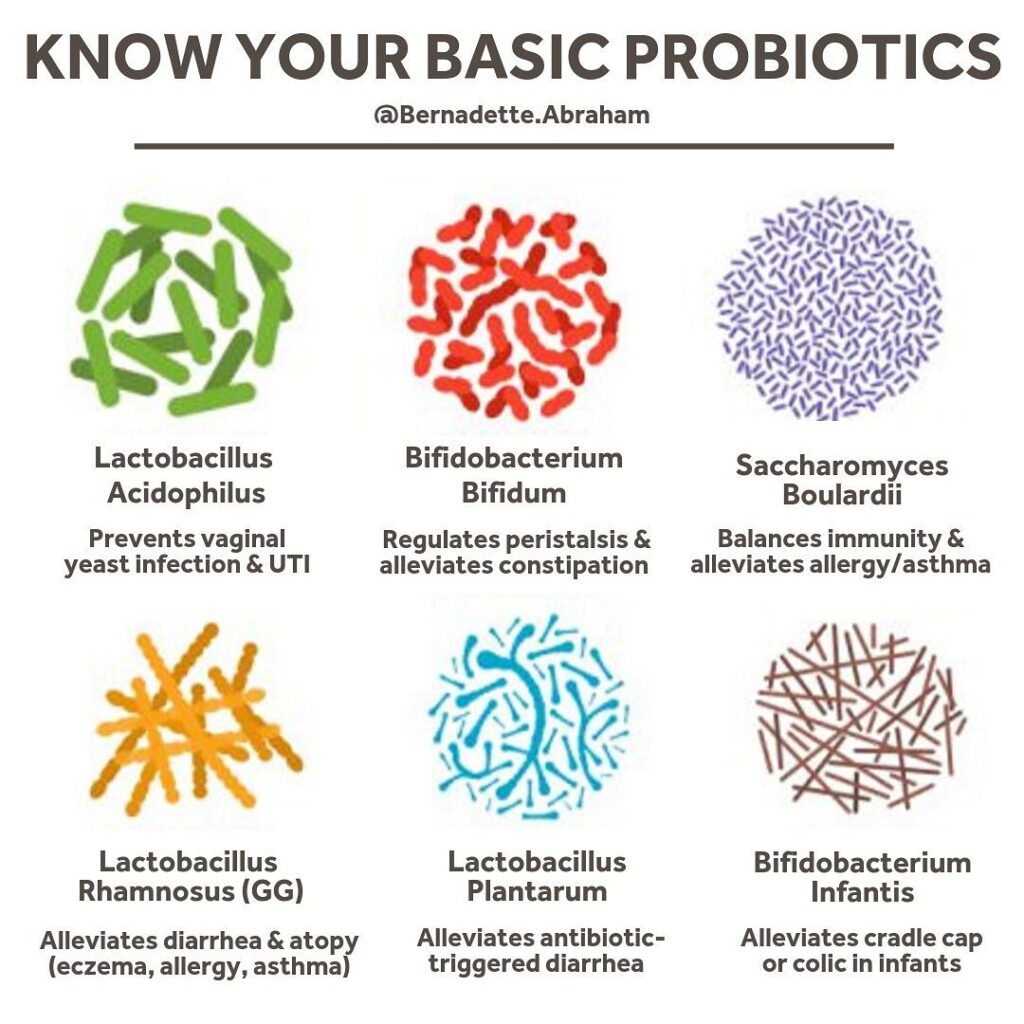
In nutrition, we broadly categorize food into macro-nutrients: protein, carbs and fats.
With probiotics, scientists have also classified them into three categories: genus, species and strains.
???????? Genus refers to the family of probiotic – for example, canine.
???????? Species refers to the group – i.e. dogs.
???????? And strains are the subtypes – i.e. dog breeds.
The genus can be “transient” meaning you poop it out after a few days or “native” – meaning it colonizes in the gut in much larger numbers than transient bacteria, and comes from air, water, soil and the vaginal birth canal during birth.
We need both types.
The majority of probiotic supplements available over the counter are formulated with “transient” genera called Lactobacillus and Bifidobacterium (see the infographic image above for some of their benefits), which are also abundantly found in fermented or cultured foods (and not to mention are much more diverse).
Eating fermented foods and/or taking broad-spectrum probiotics regularly helps keep a steady supply of beneficial bacteria in the gut.
But just like diets, there’s no one-size-fits-all probiotic. Different circumstances call for different genus, species and strains.
⚠️ For instance, those with microbial overgrowths (i.e. SIBO) should avoid probiotic formulations containing pre-biotics (i.e. food for probiotics) like FOS or inulin. It’s like adding fuel to fire!
⚠️ Those with constipation should choose probiotics with higher concentrations of Bifidobacterium than Lactobacillus.
⚠️ Those with yeast sensitivity should avoid taking S. Boulardii – even though it’s a beneficial type of yeast.
Let’s tackle soil based probiotics next and look at the most commonly used ones in probiotic supplements.
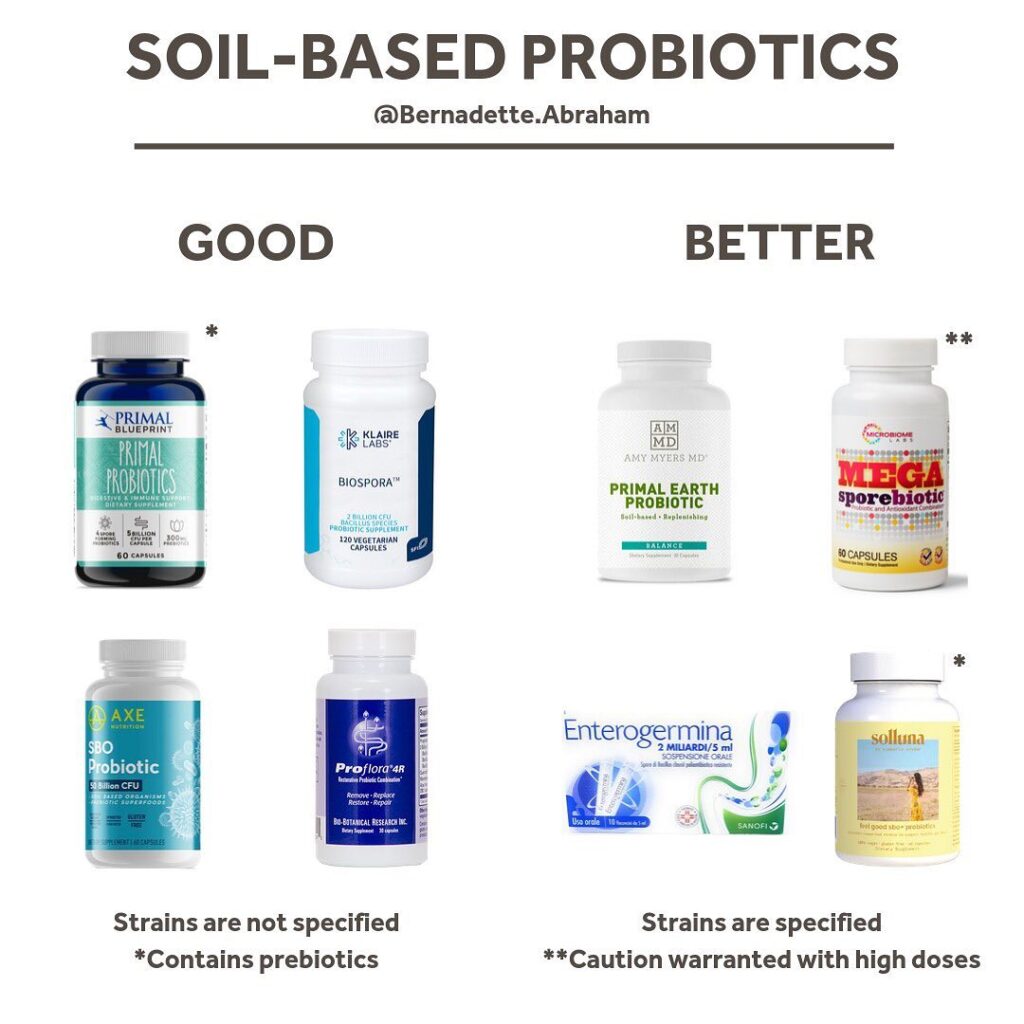
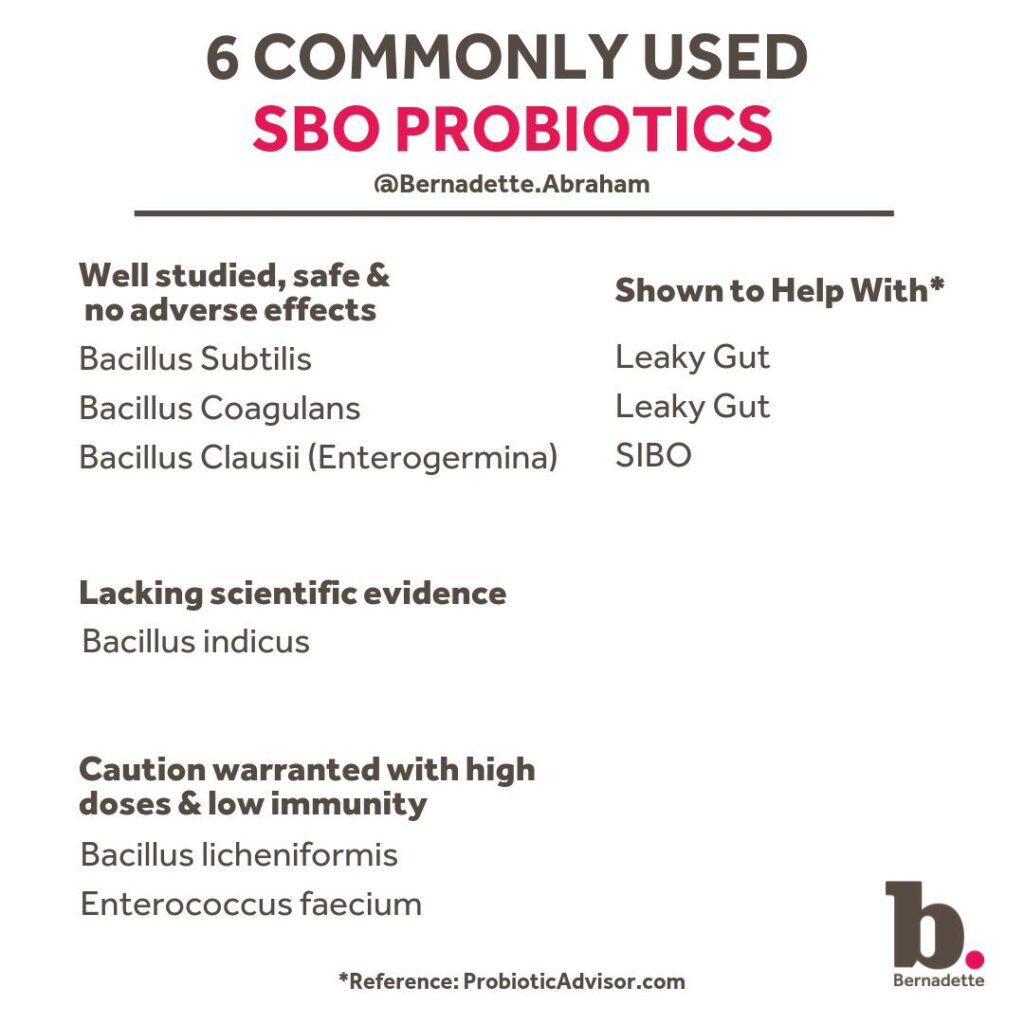
The majority of SBOs in probiotics are spore forming – meaning when they replicate, they form a protective shield resistant to stomach & bile acids, digestive enzymes, antibiotics, and heat.
This is the reason why some probiotics need to be refrigerated while others are shelf-stable.
Its safety however is debated as some believe certain SBOs may cause infection in people with compromised immunity or low resident microbes by competing with our gut flora.
The products I chose are examples of products containing the 3 SBO species most studied which have shown to be beneficial across a wide range of health conditions (Bacillus Subtilis, Coagulans & Clausii).
Products that specify the specific strains (ex. Bacillus Subtilis HU58) however are always better choices because two strains of the same species can have very different characteristics. Check your labels!
Also beware of products with prebiotics if you have SIBO as it can add fuel to the fire!
How can you tell what is right for YOU?
???????? Probioticadvisor.com is a useful membership site providing evidence-based info on specific probiotic species and strains with references to brands containing them and the health conditions they support.
???????? GI Map is one of my favorite stool tests to uncover microbial imbalances and overgrowths like bacteria, parasites, or yeast infections, along with digestive function and immunity.
Work with a functional practitioner to then determine the right course of action.
???????? Microbiome testing companies like @myviome and @thryveinside offer test kits that provide an overview of your microbiome with personalized food recommendations and restrictions, however I haven’t personally tried them to be able to vouch for these types of services. But they are available.

Ever wondered if your probiotic supplement is viable?
You’re right to be concerned because probiotics sensitive to heat can get damaged with improper processing, handling, shipping and storage.
Second, probiotic supplements can be categorized as food, dietary supplements or pharmaceuticals, causing a lack of uniform regulations and standards across the board.
This means testing for label accuracy and effectiveness is really left to the supplement manufacturer, and researching the claims made by manufacturers is really up to us consumers.
So what should you look for and ask?
1️⃣ Choose a brand that specifies the strains, not just the species. For example, Lactobacillus Acidophilus tells us the name of the genus and species but not the strain.
2️⃣ If the company claims their strains are “proprietary information”, then look (or ask) for independent research studies on the company’s website to support their claims.
3️⃣ If no studies are available, then look for 3rd party independent testing such as “NSF certified” to ensure public health & safety, or GMP certification to ensure quality standards.
4️⃣ Ensure the “other ingredients” are minimal and preferably without fillers (cellulose, rice flour).
5️⃣ If ordering online, ask about shelf-life stability for probiotics requiring refrigeration in case of shipping delays, and ensure they are shipped with an ice pack.
Despite all of the above, I have been the recipient of some very warm probiotic supplements.
So how can we tell if they’re still viable?
Try to ferment milk!
????????Open up a transient probiotic capsule and dump the contents into ½ cup of milk and leave it out for 12 to 24 hours (depending on room’s temperature) to ferment. Note, it won’t work with a SBO probiotic.
To help improve accuracy, I like to use a “control” sample; another cup of milk without probiotic right next to cup of milk with probiotic so that I can compare the two after fermentation to see if it spoiled or fermented.
If it smells and becomes creamy like yogurt… your probiotic is still alive and kicking!
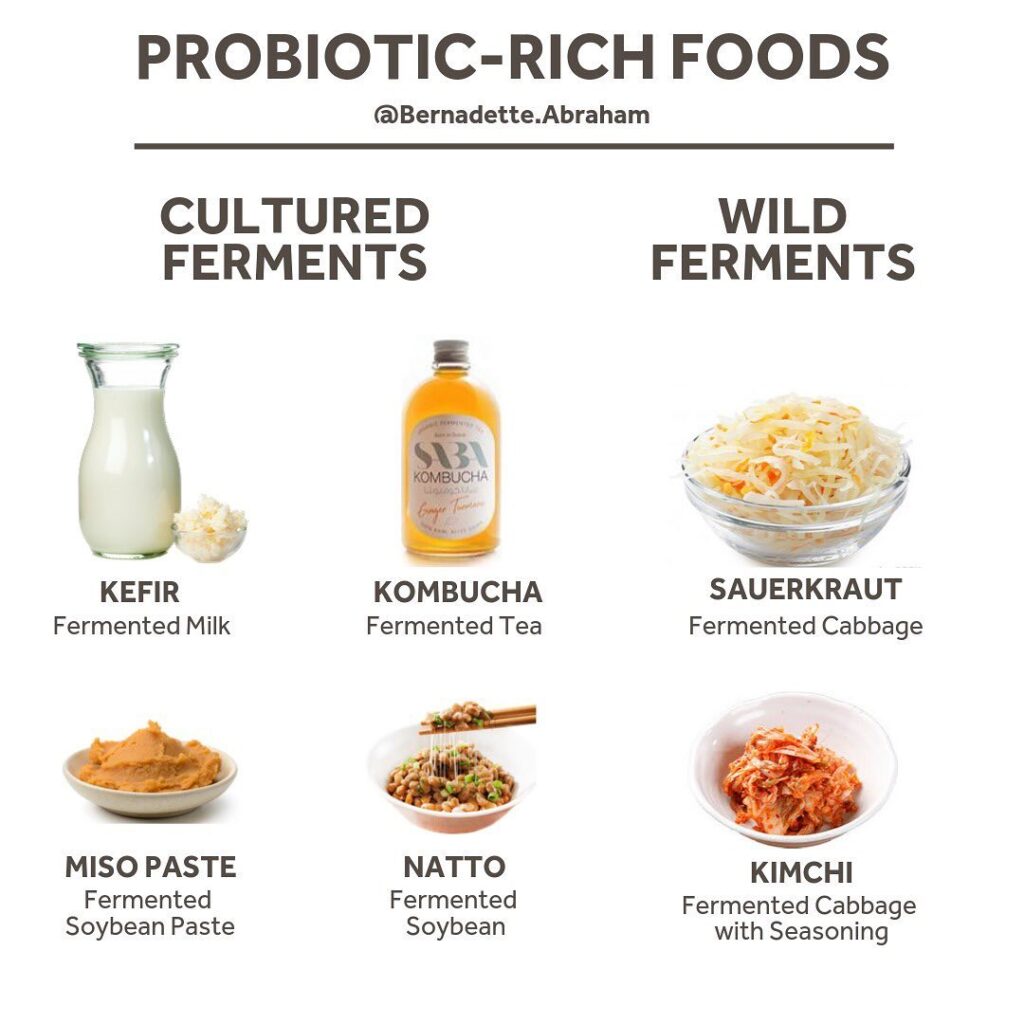
Now I realize that it’s easier to pop a pill, but here’s the thing. There is NO SUPPLEMENT that will ever out due the variety of probiotic species found in fermented foods.
That’s why I recommend a FOOD FIRST approach and use probiotic supplements for additional therapeutic support (i.e. antibiotics, birth, surgery, disease-specific) or in cases where fermented foods really aren’t an option (i.e. travel, picky eaters, histamine intolerance, food sensitivities).
As pictured ☝????, some ferments require starter cultures (i.e. culture-dependent ferments) while others use the microorganisms naturally found in the food and environment (i.e. wild ferments).
And the following image below shows the different starter cultures needed for various foods and the amazing variety of microorganisms present in the final ferment.
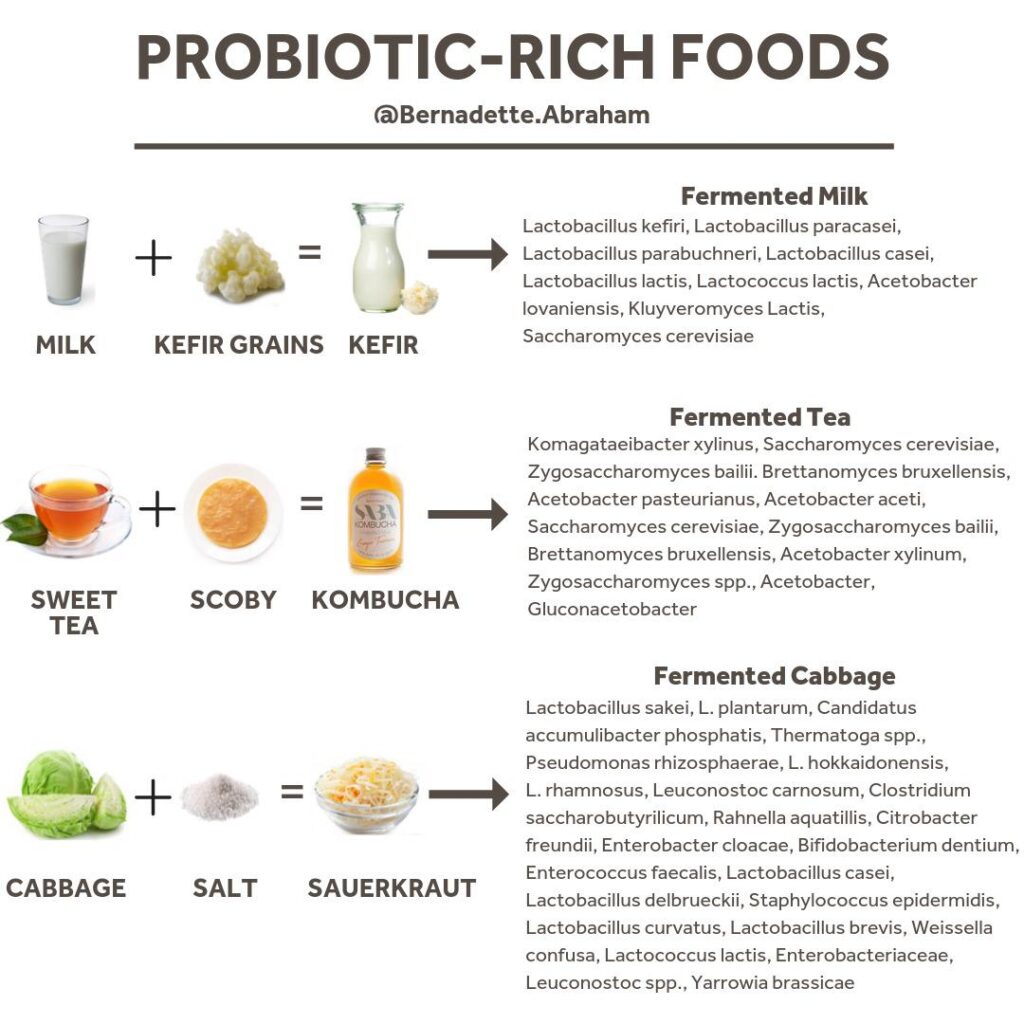
Of course, each batch will consist of different microorganisms and likely contributes to the lack of evidence showing the effects of fermented foods on gastrointestinal health and microbiota in humans.
Despite what science has yet to prove however, there is wisdom in ancient traditions and I encourage you to introduce a variety of fermented foods into your family’s diet if you haven’t already.
Remember, these “transient probiotics” leave the body after a few days of consumption so consuming fermented foods every 2 to 3 days keeps an influx of “probiotic tourists”.
Beginner tips:
✅ Make fruit smoothies and smoothie popsicles using kefir instead of regular milk (coconut milk can also be used).
✅ Enjoy sauerkraut on top of a bland avocado or as a side to any meal. Available at @organicfooduae
✅ Join the ‘UAE Culture Club’ on Facebook to find someone near you willing to share kefir grains and SCOBY to make your own kefir and Kombucha.
✅ Alcohol-free Kombucha is finally available for purchase in the UAE thanks to the team at @saba_kombucha
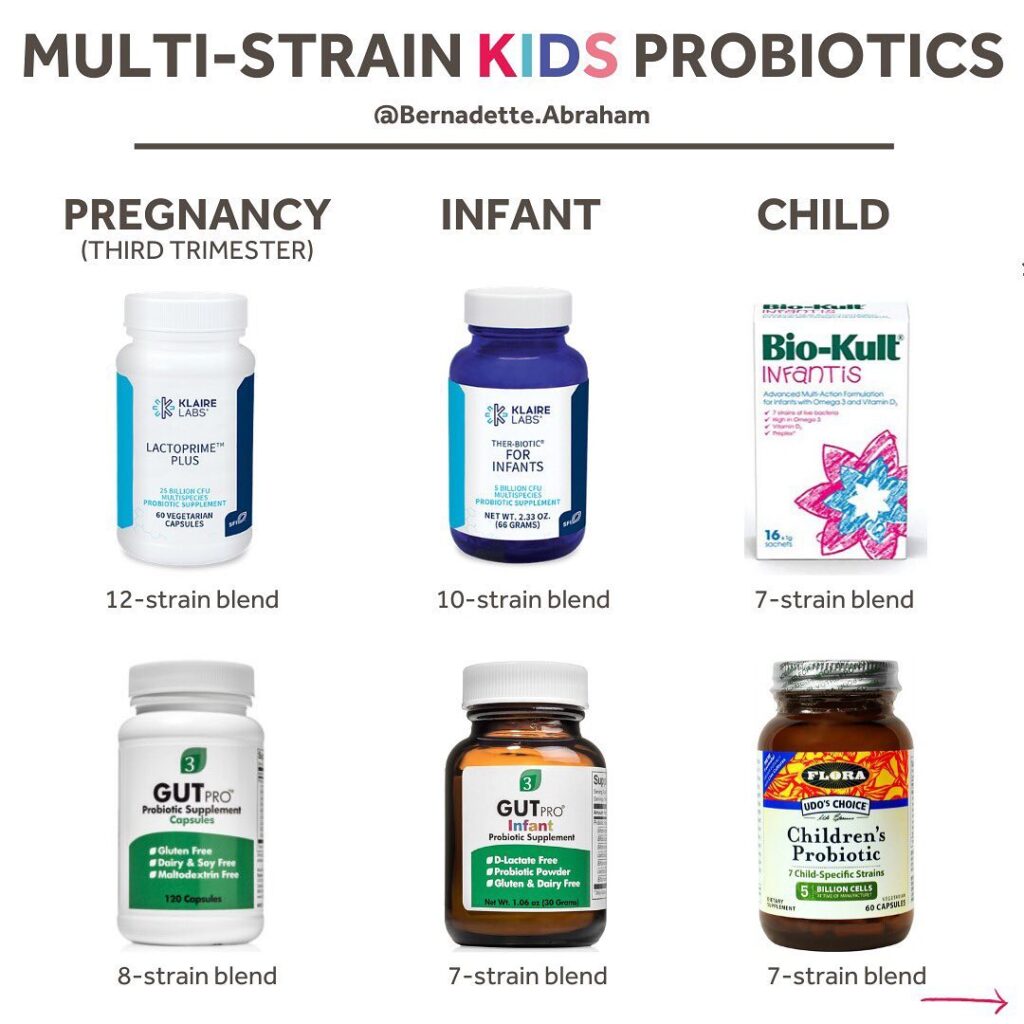
Next let’s tackle probiotics for little ones. I often get asked the question “what probiotic should I give my (insert child’s age)?”.
Bubble-burst alert: once again, it really depends on the individual and their circumstance.
Probiotics are like nutraceutical supplements. They can help correct nutritional imbalances or support a whole foods diet but always keep this in mind:
???????? No multi-vitamin can ever replace real food, and no probiotic can ever replace the variety of strains in fermented foods (see the infographs above for probiotic-rich foods and their strains).
But if you still insist on supplementing for preventative measures, then a broad-spectrum 7+ strain probiotic is preferred over more targeted probiotics.
???????? The infograph below provides some information on some of the specific strains shown to help various health conditions in infants and children, and brands of products containing them.
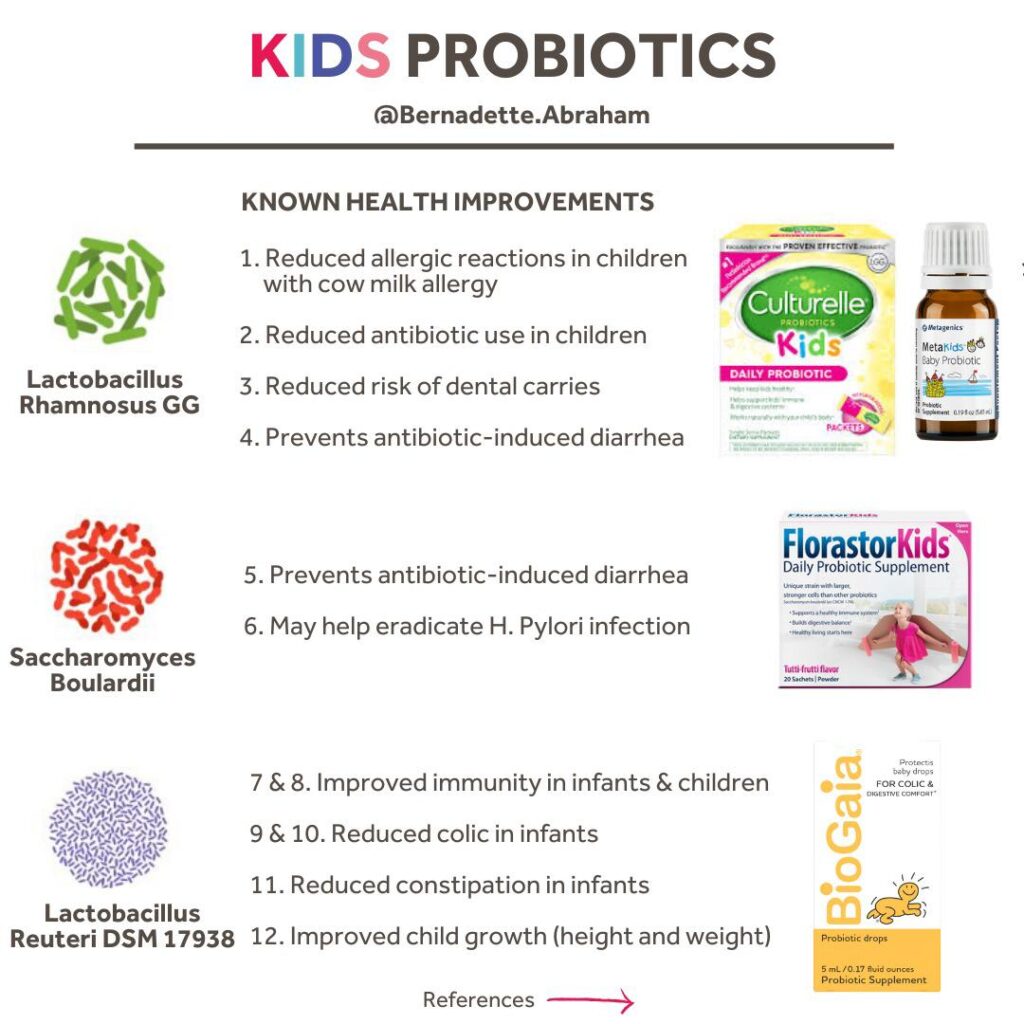
The health of a child’s gut microbiome really starts at birth when they pass through the vaginal birth canal and get inoculated with the mother’s microbiota.
In fact, the Bifidobacterium Infantis species (typically abundant in the gut of healthy babies) multiplies significantly in the third trimester of pregnancy in preparation for birth. Why?
Because the natural sugars found in breast milk (oligosaccharides) feed Bifidobacterium Infantis passed on to the baby through birth, which in turn helps the baby develop a strong digestive/immune system. Amazing right?
C-section babies unfortunately miss out on this gut health “launch pad”.
Not to worry or feel guilty though – the gut microbiome can always be improved through breastfeeding, diet, and supplementation for several months.
???????? For babies, probiotic powder can be placed in the milk if bottle-fed or directly on the nipple if breastfed.
???????? Switching to a multi-strain probiotic containing Bifidobacterium Infantis during the 3rd trimester of pregnancy can help with this natural shift in composition.
Hopefully this probiotic 101 guide was helpful!
As always, I’d love to hear from you. Please feel free to leave your comments or questions below.